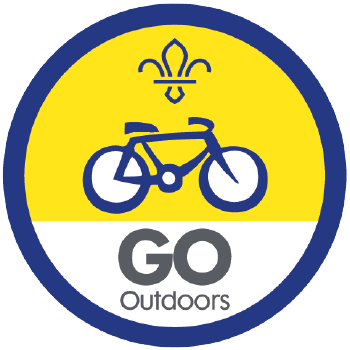I-spy-cycle
You’ll need
- Bikes
- Helmets
Before you begin
- Organise the trip well in advance. Plan a circular route around your local area, ideally off-road or on designated cycle paths. Try to make sure there are places for people to safely stop and play a round of i-spy, for example, a park, a tow path, a bench, or a place of interest.
- Don’t forget to test the route for hazards and do a risk assessment before your ride.
- Invite parents and carers who cycle to come along and help
- Make sure that everyone taking part has access to a bike. Anyone who doesn’t have one could borrow one – some people may have spare bikes that belong to siblings, or bikes their children have outgrown, that they’re happy to lend. There will probably be a mix of people with and without stabilisers.
- Everyone should bring a refillable water bottle (and snacks, if you’re planning a longer ride).
Go on your I-spy-cycle
- Split into groups of between three and six people. Each group should have at least two adults, to cycle at the front and back of the group.
- The person leading the activity should explain the safety rules everyone needs to follow. Young people must always stay with their adult helpers. If they need to stop, they should let their adult helpers know. They should only cross roads with adults, and they shouldn’t overtake each other when cycling on the road. They should allow pedestrians to pass.
- Everyone should set off on the I-spy-cycle route the person leading the activity planned. One adult should be at the front of the small group, and another should be at the back.
- Every now and then, stop in a safe location where everyone can stay together without blocking pedestrians.
- Someone should be the spy. The spy should look around the space and choose something everyone can see without moving. Once they’ve chosen something, they should say ‘I spy-cycle from my bicycle something beginning with’, and say the first letter of their chosen thing.
- Everyone else should try to guess what the spy has spotted. Once someone’s guessed, everyone should get back on their bikes and repeat steps three to six until they reach the end of the route.
- As everyone cycles, the helper could add in discussions about other topics such as road signs, types of trees, habitats, local history, and types of road crossings.
Reflection
This activity was a chance to be active; hopefully people had fun too. What did everyone enjoy about the cycle ride? People may have spotted something new, visited a new place, or just enjoyed spending time with their friends. How is travelling by bicycle different from being in a car or on public transport? It’s slower, but you have the chance to see more things and you’re exercising at the same time. Did anyone feel out of breath, or notice that their legs were beginning to ache? This shows that their muscles are working hard and that they’re trying your best at exercise that’ll help them grow stronger. Everyone who completed the ride did a really good job – well done!
Safety
All activities must be safely managed. You must complete a thorough risk assessment and take appropriate steps to reduce risk. Use the safety checklist to help you plan and risk assess your activity. Always get approval for the activity, and have suitable supervision and an InTouch process.
- Outdoor activities
You must have permission to use the location. Always check the weather forecast, and inform parents and carers of any change in venue.
- Cycle and wheeled activities
Use appropriate protective equipment. You must wear helmets. Wear elbow and knee pads as defined by your risk assessment.
- Adventure
This activity has specific rules and systems to make sure it’s managed safely. Take a look at adventure activities for more guidance.
Rather than spying items, turn the ride into a scavenger hunt where everyone has to collect certain items. The items will depend on your route but could include a stone of a certain colour, a leaf with three points, something round, or something green.
You can make the bike ride whatever length you like. If it’s a longer ride, you could even stop halfway for a picnic! Make sure everyone has somewhere to go to the toilet and wash their hands if it’s a longer bike ride.
Check that everyone can ride a bike – it’s OK if people use stabilisers.
Some disabled people may use a specially adapted bike, or ride in a bike trailer. You may be able to hire a suitable adapted bike from a local bike shop or cycle club. For more information, check out britishcycling.org.uk/disabilityhubs?c=EN.
All Scout activities should be inclusive and accessible.
It’s easy to theme this activity so it counts towards other badges. Take a camera with you and photograph 10 different things for the Photographer Activity Badge. Ask young people to decide where to go and what they expect to see and use the cycle ride as part of the Explore Activity Badge.
Cubs could plan a route that passes points of interest as part of their Local Knowledge Activity Badge, or spot six different living things for their Naturalist Activity Badge.
Young people can decide on the route and the type of place they’d like to explore.
